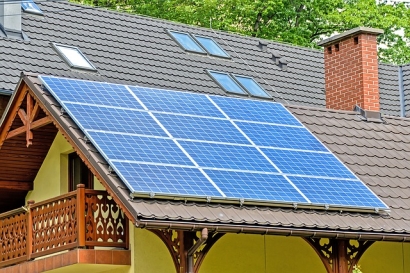
According to a May 2022 article in the Washington Post, some parts of the country saw their electricity bills surge 40% in a matter of two months.
The rising expenses — and increasing pressures placed on Americans' bank accounts — have many seeking greener solutions to cut electricity costs, such as solar panels. However, for low-income families who'd ironically benefit the most from renewable energy, solar panels remain a far-fetched idea.
Fortunately, solar programs for low-income communities are on the rise in the U.S., with some states making it possible for low-income households to reap the rewards at a minimal price.
A 2020 report by the American Council for an Energy-Efficient Economy (ACEEE) highlighted the financial constraints associated with electricity in low-income communities. According to its findings, two-thirds of low-income U.S. households spend more than 6% of their earnings on utilities, while two out of five spend over 10%.
The U.S. Department of Housing and Urban Development (HUD) describes "low-income" as households meeting federal indicators below the 80% poverty line of an area's median income.
Generally, low-income solar programs don't deliver free solar panels but aim to provide them at a significantly lower or eliminated upfront payment. Rebates and grants typically offset installation fees, while homeowners may need to cover ongoing costs.
Other programs, like Hawaii's Green Energy Money $aver (GEM$) On-Bill Program, allows customers to install solar panels with zero upfront charges and repay the costs through their monthly utility bills over time. The program doesn't just target low-income homeowners, though — Hawaii permits 95% of its population to opt into GEM$.
Even if solar panel systems aren't free in each program, low-income homeowners have a much better chance of participating.
Low-income Americans desperately need assistance when it comes to covering their utilities. As more U.S. states develop programs to provide clean, affordable energy to underserved and struggling communities, these three solar initiatives could serve as a model for future endeavors.
The Connecticut Green Bank Low-Income Residential Solar Incentive Program (RSIP) ran from 2015 to 2021 and aimed to help low-income homeowners lease rooftop solar panels without an initial fee.
The RSIP was financed by the sales of solar home renewable energy credits, in which the state paid an incentive to PosiGen for power generation to offset the lease terms cost.
The Connecticut Green Bank's partnership with PosiGen had great success, with 4,400 households leasing solar panels throughout the program's duration, of which 60% fell 100% below the area median income. Altogether, the projects amounted to 29 megawatts of new solar capacity.
Leasing solar panels has many advantages over buying, regardless of whether you classify as low-income. For instance, leasing helps decrease your energy bills from the get-go, whereas you have to make up for the initial investment of your system when you purchase it outright.
The California Single-Family Affordable Homes Program (SASH) subsidizes solar panel systems for $3 per kilowatt. The State of California Public Utilities Commission outlines SASH eligibility as follows:
Households must receive service from one of California's three primary electricity companies: Pacific Gas & Electric (PG&E), San Diego Gas & Electric (SDG&E) and Southern California Edison (SCE).
Participants must own and reside in their homes.
Participants must meet the federal threshold of 80% below the area median income and live in what the state defines as "affordable housing."
GRID Alternatives currently facilitates the program — a nonprofit that has assisted families in saving more than $100 million in energy costs since 2004 while preventing 315,000 tons of greenhouse gas emissions.
In partnership with several organizations throughout the Washington D.C. Metro, the D.C. Department of Energy and Environment aims to help 100,000 low-income families save 50% on their electric bills in the next 15 years.
Participants in the Solar for All Program must earn at or below 80% of the area median income for eligibility. Like Connecticut's RSIP initiative, homeowners lease the system at no cost.
Thanks to programs like Solar for All, D.C. outpaced its goal of sourcing 2.5% of its electricity from solar by 2021 — the city's utilities must source 100% of electricity from renewables by 2023, of which 5% must be solar power.
Access to a clean, affordable energy source shouldn't be for the few lucky ones who can afford it. Regardless of age, gender, race or class, everyone deserves the equal opportunity to invest in their future and reap the rewards from renewables.

